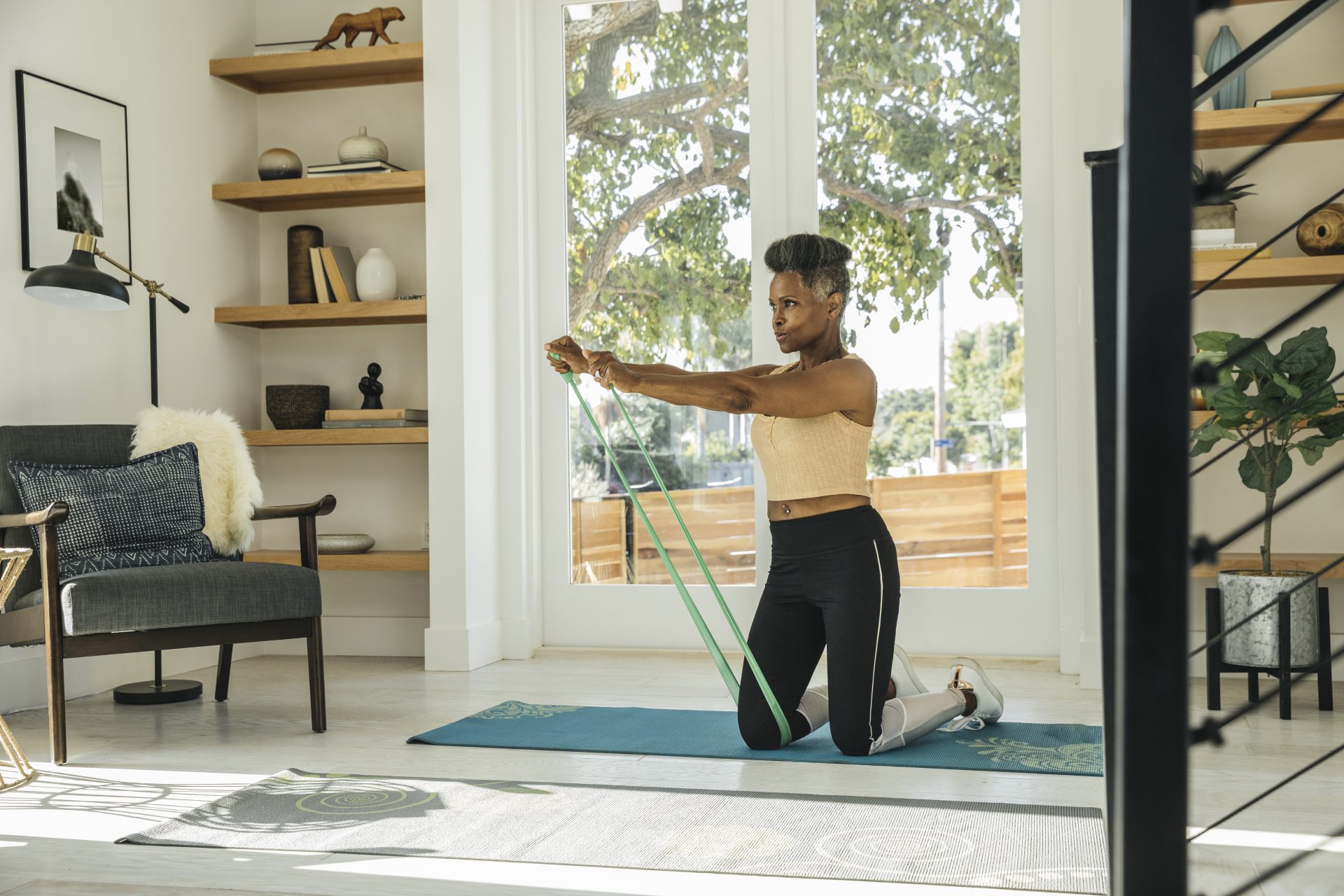Resistance bands vs dumbbells: what′s the best piece of kit?
Resistance bands make easy work of training at home, but are they as effective as weights?
When it comes to home workouts, we need efficient sessions that require minimal equipment – because who has the time, money or storage space to be faffing around with a load of kit? That’s why resistance bands were so useful in lockdown; they’re easy to store and much cheaper than free weights. But now that we’re back in the gym, with access to all the kit we could need, is ditching the elastic in favour of iron a mistake?
You may also like
6 important pieces of advice for new gym-goers, if the Olympics has inspired you to train
The benefit to resistance bands is in the name, really, as bands are a great way to add extra resistance to your workout. We need resistance, or an opposing force for our bodies to work against, in order to break the muscle and adapt to training. But can you get enough of that resistance from bands alone?
Let’s start with the science of muscle growth. Traditionally, it is said that you build strength when working in sets of up to six reps, build muscle when working in sets of 8-12 reps, and build muscle endurance when working within sets of higher rep ranges. But generally, any form of resistance will increase your strength and ability so long as you work until failure (that is, you can’t do any more reps).

As long as you’re using the right band, the idea is that you should get stronger, says Pennie Varvarides, strength and conditioning coach. “I have loads of clients who got stronger over lockdown just using resistance bands,” she says.
The key is to not buy a flimsy elastic band but instead one that can elicit the same weight as a dumbbell. Nowadays, new bands on the market can even add up to 110kg to your training. “If you are new to strength training, only used to working with bodyweight, or someone who squats 40kg in the gym, a 40kg band will be beneficial – as it will provide ample resistance for you,” Pennie says.
The thing is, if you are someone who usually relies on heavy dumbbells, you probably won’t find a band that is heavy enough to push you until failure. “If you are someone who usually squats 100kg, then is doing squats with a resistance band worth 40kg going to be that helpful? Maybe not, unless you’re doing quite a lot of them,” adds Pennie.
You may also like
How to do a squat correctly: nail this bodyweight move for lower-body strength
Research also shows that it is the load our muscles are under when they are extended that elicits the most muscle growth. For example, the muscles are most worked when we are at the bottom of our squat. But when using a resistance band, it’s harder to load the muscle at the bottom of the movement, as this is when the band will be at its saggiest.
“As with everything, the key is training with intention. With resistance bands, it’s especially easy to bounce through reps without thinking about what you’re doing and letting the momentum of the band move you. That’s not efficient, but if you are thinking about where that power is coming from and pausing in a position before you push or pull, rather than letting the band move you, then yes, they can be efficient.”
If you are just using resistance bands to keep you going until you can get your hands on iron again, it’s important to consider the types of exercises you do. A lot of movements don’t “transfer over neatly” from dumbbell to resistance band, Pennie explains.
“If you want to do chest presses but you don’t have any kit except bands, you could work your chest by doing press-ups with the resistance band over your back. Doing that will build and maintain strength, so that when you go back to bench pressing, you’re able to still lift heavy. However, because the shape of the movement is slightly different, you won’t necessarily be able to chest press what you did before. It will take a couple of weeks for your brain to repattern the shape,” she says.
You may also like
Chest workout: 3 press-up variations that build strong chest muscles
This is where she thinks people go wrong with resistance bands: using lighter bands and doing resistance-band specific exercises. When these people then go back to strength training, they feel as though they’ve lost strength. “Instead, use heavy bands and create the same shapes you would with dumbbells,” she says. “It’s easier to do upper body moves with resistance bands, but if you get a bit creative you can still do moves such as deadlifts, good morning, squats and lunges.”
Let’s not forget that resistance bands are also way more accessible for people – they’re cheaper to buy and easier to store. Given that they can challenge you, maintain strength and even grow muscle – plus, make your workouts a bit more interesting during lockdown – they aren’t something to turn your nose up at.
Images: Getty
Source: Read Full Article
